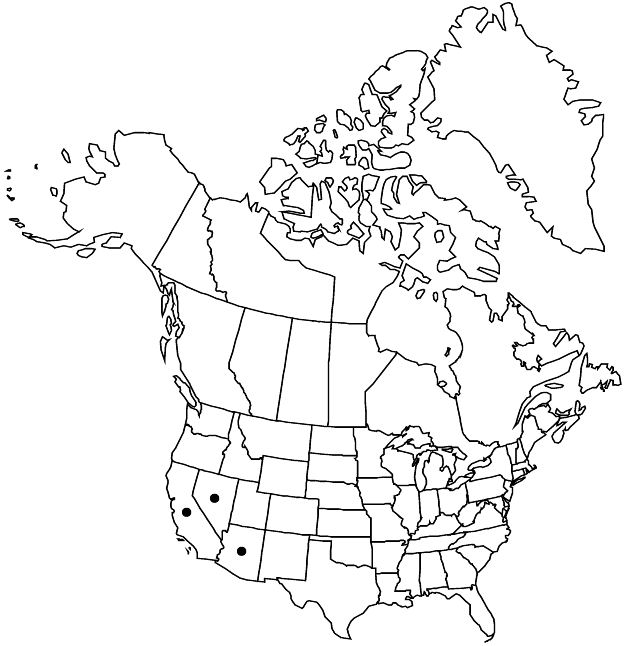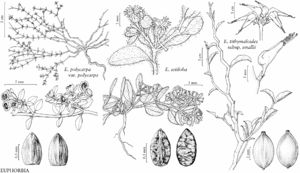Difference between revisions of "Euphorbia polycarpa var. polycarpa"
FNA>Volume Importer |
imported>Volume Importer |
||
| (2 intermediate revisions by 2 users not shown) | |||
| Line 53: | Line 53: | ||
|publication year= | |publication year= | ||
|special status=Illustrated | |special status=Illustrated | ||
| − | |source xml=https:// | + | |source xml=https://bitbucket.org/aafc-mbb/fna-data-curation/src/2e0870ddd59836b60bcf96646a41e87ea5a5943a/coarse_grained_fna_xml/V12/V12_307.xml |
|genus=Euphorbia | |genus=Euphorbia | ||
|section=Euphorbia sect. Anisophyllum | |section=Euphorbia sect. Anisophyllum | ||
Latest revision as of 19:14, 5 November 2020
Herbs, annual or perennial, with slender taproot to thickened rootstock. Stems prostrate to reclining, usually mound- or mat-forming, 7–25 cm, glabrous, puberulent, shortly pilose or hirsute. Leaves opposite; stipules usually distinct, occasionally connate basally on lower side of stem, subulate, 0.3–0.6 mm, shortly pilose or hirsute; petiole 0.4–0.9 mm, glabrous, puberulent, shortly pilose, or hirsute; blade ovate, elliptic, or oblong, 1.5–5 × 1–3 mm, base asymmetric, rounded to slightly oblique, margins entire, apex obtuse or acute, surfaces glabrous, puberulent, shortly pilose, or hirsute; venation obscure, only midvein sometimes conspicuous. Cyathia solitary at distal nodes, sometimes appearing clustered when distal nodes congested; peduncles 0–1.6 mm. Involucre campanulate, 0.6–1.1 × 0.5–1.3 mm, glabrous, shortly pilose, or hirsute; glands 4, dark pink to black-purple, oblong, 0.1–0.3 × 0.2–0.5 mm; appendages white to pink, usually ovate or flabellate, sometimes forming narrow rim around distal margin of gland, 0.1–0.2 × 0.3–0.8 mm, distal margin entire or shallowly lobed. Staminate flowers 15–30. Pistillate flowers: ovary glabrous, puberulent, or shortly pilose; styles 0.2–0.4 mm, 2-fid 1/2 length. Capsules ovoid to subglobose, 1.1–1.4 mm diam., glabrous, puberulent or shortly pilose; columella 0.9–1.2 mm. Seeds pink-brown to light brown, narrowly oblong-ovoid, (3–)4-angled in cross section, 0.8–1.1 × 0.5–0.6 mm, smooth or faintly rippled.
Phenology: Flowering and fruiting year-round in response to sufficient moisture.
Habitat: Desert scrub, chaparral, coastal sage scrub, disturbed areas, especially roadsides.
Elevation: -20–1200 m.
Distribution

Ariz., Calif., Nev., Mexico (Baja California, Baja California Sur, Sonora).
Discussion
Selected References
None.
